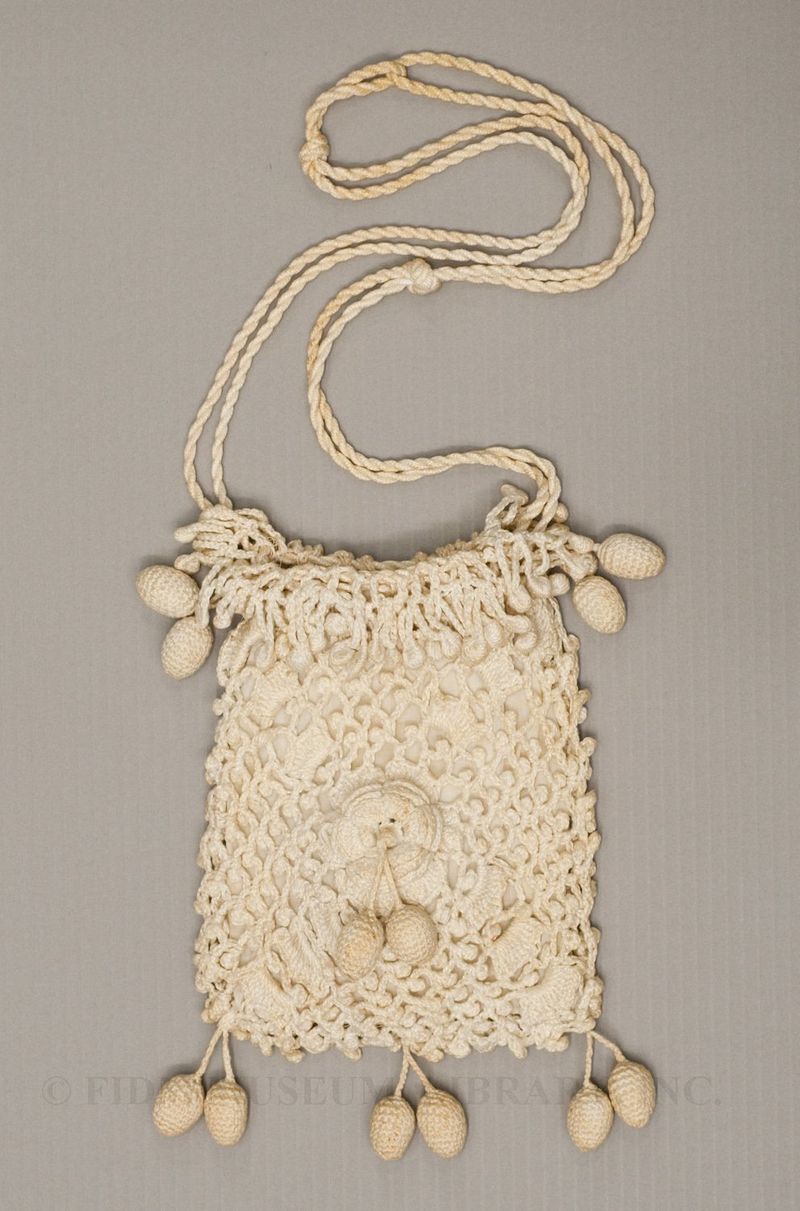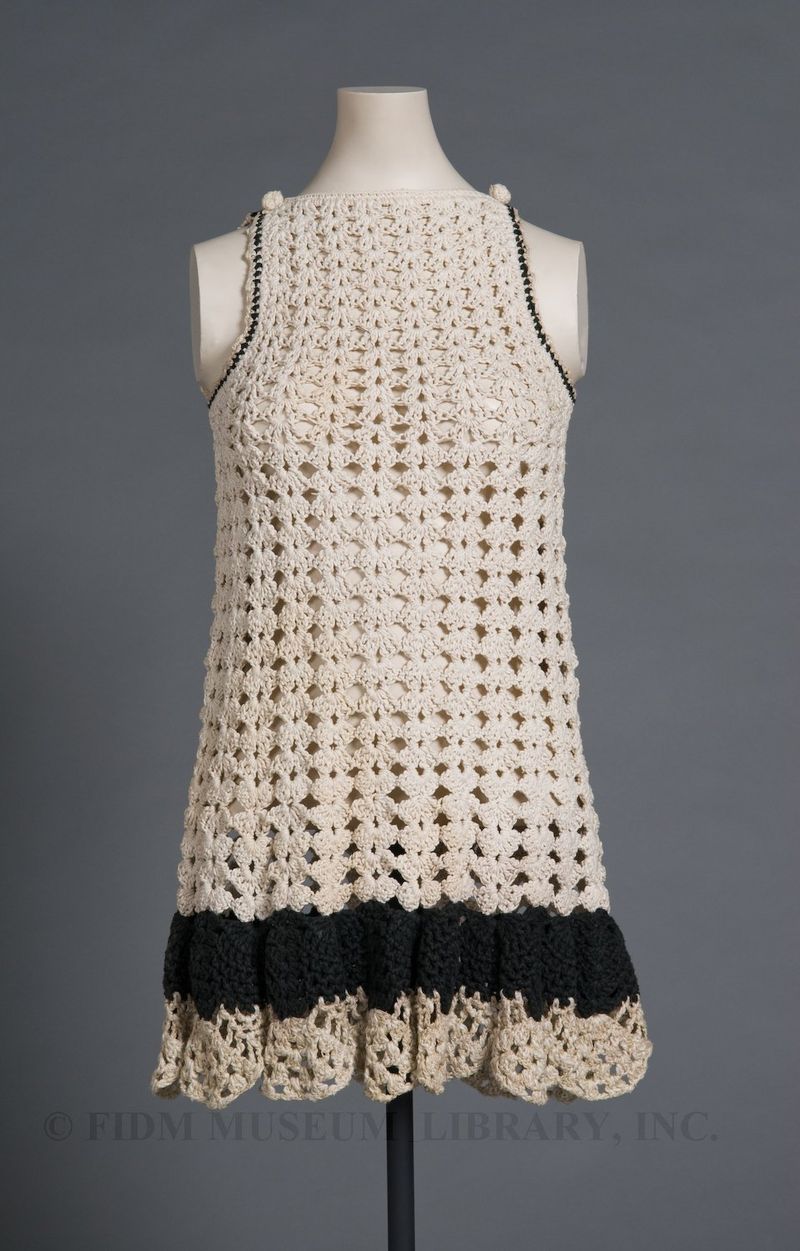Despite the fact that knitting and crochet employ similar tools (hands, yarn and a long, pointed implement) crochet is often labeled the "other yarn craft." This remains true even within the context of the early 21st century, which has given rise to a tremendous revival of interest in all do-it-yourself hand-crafts. Their differing levels of popularity might be due to the inherent nature of these two yarn crafts. Crochet lends itself more towards open, lace-like finished projects, while knitting usually produces a dense, sturdy product prized for its warmth. Within the context of garment creation, crochet is more frequently used to create elegant garment accents or embellishments, such as cuffs, collar or shawl, rather than an entire garment. In contrast, knitting is used to create garments which become the focal point themselves.
Though no scholar has been able to pinpoint the exact origins of crochet, within the European context it probably developed from tambour needlework, a type of needlework originating in modern-day India, Pakistan and/or Turkey but practiced by European women. In tambour, a hooked needle is pushed through fabric stretched on a frame, pulling a thread through the fabric to create a chainstitch. At some point, the fabric was discarded and the thread or yarn worked on its own with the hooked needle. This evolution probably occurred sometime around 1800, as pre-1800 examples of European crochet have not been located by scholars.
Crochet took on particular importance in Ireland, where it was introduced by Irish nuns in the early 19th century. Irish nuns used crochet to approximate motifs found in Venetian lace and taught this skill to girls and women throughout Ireland. The resulting lace-like product was marketed as an affordable alternative to expensive but highly desirable bobbin or needle lace and was sold throughout Europe and North America. Used often as garment trim, Irish lace was also incorporated into decorative items for the home and personal accessories.
This small purse of Irish crochet dates from about 1905-10 and was probably created from a pattern featured in a fashion periodical. Patterns for small crocheted purses, often decorated with beads, were common in the first decade of the 20th century. Due to the relative speed with which they could be produced, purses were often suggested as the ideal hand-crafted gift.
1905-1910
Gift of Tina Brown
S2008.925.6
Irish crochet is notable for its use of three-dimensional motifs. These small floral or geometric motifs are crocheted separately and then basted on to a crocheted ground. Or, the motifs are worked and the ground created around them. The ground usually resembles mesh, though other forms may be worked in too. The floral motif in the center of the purse, along with the hanging crochet covered beads and fringe give this small purse a sense of textural interest that would be impossible to create through knitting.
Though crochet of all types was popular during the 19th century, interest in crochet diminished in the 20th century. Though many women surely practiced crochet as a cherished hobby, it remained firmly in this arena until the late 1960s. In reaction to the highly synthetic fashionable wardrobe of the mid-1960s, many in the late 1960s developed an interest in creating and wearing clothing made from natural fibers and traditional processes. Clothing procured from non-Western sources was popular, along with clothing that suggested a specific process of creation, like patchwork, knitting or crochet.
Cotton
1966-69
Gift of Stephanie Kline Morehouse
S2002.148.4
Unlike knitting, crochet has never been mechanized. Thus, when you see a crocheted garment, you know it has been created by hand. This dress actually bears a label specifying the maker: Robert Car for Murrell. According to a 1970 article in the New York Times, Car lived in Portugal in the late 1960s and crocheted a variety of garments to be sold under the Murrell and Tavaris labels. Both companies exported hand-crocheted garments from Portugal for retail in department stores, including Bergdorf Goodman, Saks Fifth Avenue and I. Magnin. This garment surely comes from one of Car's see-through collections, which he designed specifically for the daring young customer "with guts."1
1 Howe, Marvine. "Arraiolos Rugs and Crocheted Fashions Help Put Lisbon on Shopper's Map" New York Times 28 Feb 1970: 45.




>>Their differing levels of popularity might be due to the inherent nature of these two yarn crafts. Crochet lends itself more towards open, lace-like finished projects, while knitting usually produces a dense, sturdy product prized for its warmth.<< Huh? PLEASE correct this idiotic blanket statement. Google "Onasburg shawls". As someone who both crochets and knits, historic and contemporary, and has for over 40 years, I have found that crochet makes a very study, in-elastic fabric. (Yes, lace can be made with crochet, and I have it.) Knitting, on the other hand, provides elasticity. Extraordinary lace has been made by knitting for centuries, long before crochet was invented.
Kathryn,
Thanks for the reminder that both knitting and crochet can be used to create a diversity of objects with different qualities depending on factors like needle size, yarn, etc.
I own the dress pictured above! How exciting to find it on your blog. I’ve had it for ten years…it’s one of my favorite pieces…but had never been able to locate any information about the designer etc. Thanks!
Hi Judy,
Glad that we were able to help you out! Love it when we’re able to make connections with objects in our collection and the world outside the FIDM Museum.
Hi Rachel, I’m thinking about selling my dress. Any idea of it’s worth? I love it so much I’d hate to let it go for under-value. (ps…i saved this link from 3 years ago!)
Hello again Judy!
Unfortunately, we are unable to offer valuations of objects due to our ethical standards. I’d suggest searching online auction sites to see if you can find any comparable or similar objects. Sorry we can’t be of more help! Best of luck.